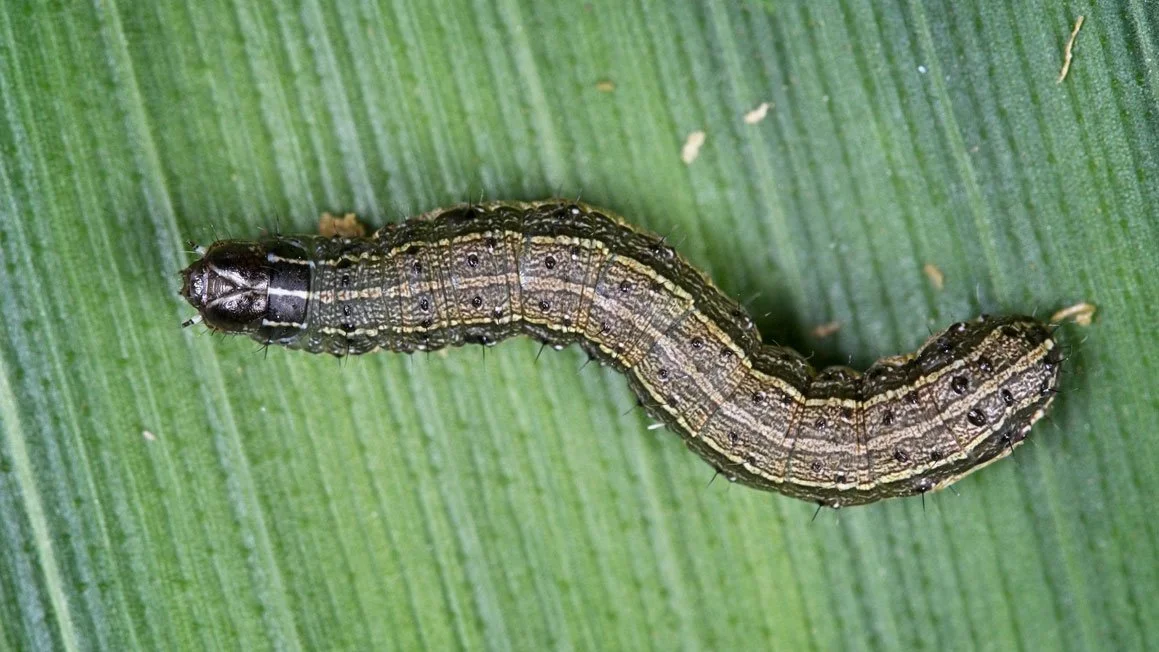Fall Armyworms: Identification, Damage Indications and Control
"Nature gives to every time and season unique beauty; from morning to night, it’s just a succession of changes so soft and comfortable that we hardly notice the progress." — Charles Dickens
Unless of course you're talking about noticing that giant bare spot on your lawn due to an invasion of armyworms.
Armyworms can cause significant, costly damage to local lawns and green space. These invasive pests can completely destroy a lawn in a matter of 24 hours if not treated immediately upon discovery. These destructive lawn invaders are found in large numbers (up to millions in a single colony) “marching” across the turf and eating grass blades as they go. A moth can fly onto your property and lay thousands of eggs, which will hatch and grow into a 1 to 1 1/2 inch worms – gray, green, or brown in color.
They're also called an armyworm because of their habit of moving in large numbers from field to field as they exhaust their food supply.
Here's some additional information on the armyworm’s life cycle, eating habits, and tips for spotting a potential infestation.
LIFE CYCLE
Armyworm larvae chew through turf for roughly 14-28 days. They mutate into pupae for 7-14 days, and their cocoon-like structure gives them wings for flight. They turn into moths for 11-14 days, laying thousands more eggs. The eggs hatch in 3-5 days to create another armyworm generation for another 14-28 days that will cause more turf damage.
EATING HABITS
Armyworms feed on the grass any time during the day and are known for their intense eating habits.
They devour grass and plant life in waves.
POTENTIAL SIGNS OF AN ARMYWORM INFESTATION
An increase in the number of birds and animals an a yard or field can be a potential sign of an armyworm infestation. While birds eat the caterpillars and typically are seen as an ally to an infestation they cannot usually eat enough to keep the infestation to a minimum.
Also, armyworm damage appears similar to drought damage where the grass becomes wilted or yellow-brown in appearance.
The lawn may also begin to “move” as armyworms travel in large groups from one area to another.
PREVENTATIVE VS CURATIVE TREATMENTS
Preventative armyworm treatments allow you to do more with less, so it's a more sustainable lawn care solution that yields better results. This would be done earlier in the warm season typically between early June and early July.
On the other hand, if you wait for armyworms to infest (and grow larger), curative treatment requires using products with greater toxicity and may not be effective.
The curative option also would be an option if you see any major indicators or turf damage, the adult form of an armyworm or other examples of an infestation.
Villani Landshapers Lawncare Manager Justin Kolvenbach said "While it's later in the season than we've ever seen them, they're out and about in extremely large numbers because of the hot and dry weather we've had this summer. You run the risk of losing your entire lawn if an infestation goes untreated."
Armyworms, if left untreated, can ruin vast panels of turf and cause damage that will be extremely difficult to counteract.
Warm season grasses that grow in the southern states can usually regenerate after armyworm invasions, but the caterpillars can permanently devastate cool season grasses such as the ones found in the upper midwest and Wisconsin.
For warm season grass, is mostly an aesthetic issue. But if you have cool season grass you probably want to treat your lawn as soon as possible.
For more information on how we can help you with an infestation of armyworms- and a wide array of other invasive pests- contact us at 262-252-4541.



